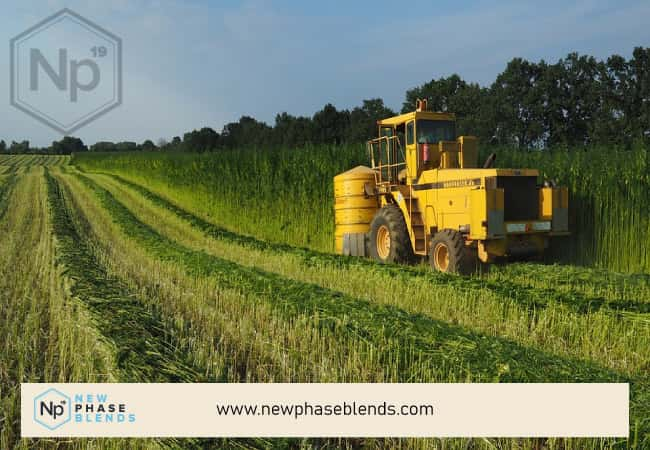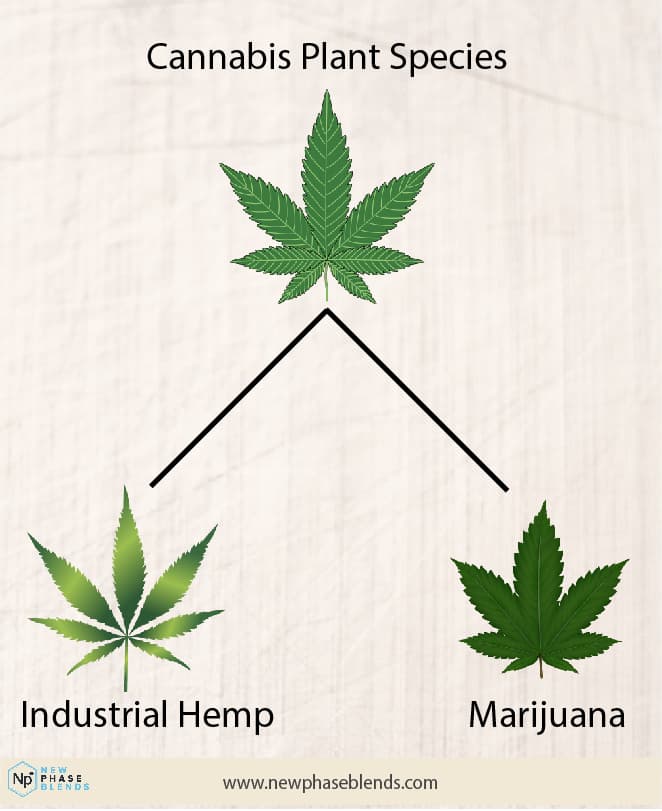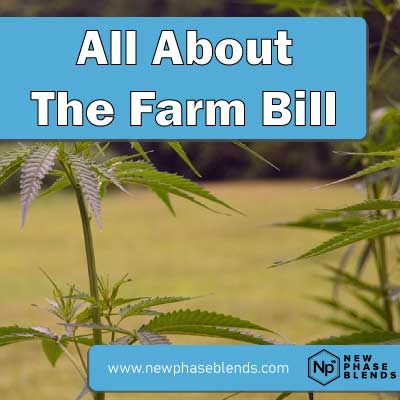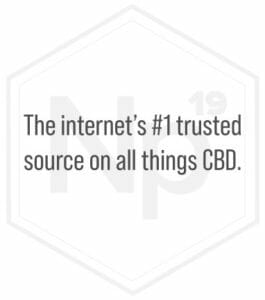The Agriculture Improvement Act of 2018, commonly known as the 2018 Farm Bill, was a landmark piece of legislation that significantly influenced the American agricultural sector, rural communities, and the environment. Signed into law on December 20, 2018, the bill aimed to provide stability and support for farmers, promote conservation efforts, and address various issues related to food security, nutrition, and infrastructure. This article offers an in-depth analysis of the bill’s key provisions, highlighting their implications for the nation’s agriculture and rural communities, and provides an insightful perspective on the overall impact of the legislation.
The Importance of the Farm Bill
The Farm Bill is a critical piece of legislation that affects a wide range of stakeholders, from farmers and ranchers to consumers and the environment. Updated approximately every five years, the Farm Bill sets forth policies and programs related to agriculture, food, nutrition, and rural development, shaping the future of the agricultural industry in the United States.

The 2018 Farm Bill, with a budget of $867 billion over ten years, addressed a variety of pressing issues and introduced new programs and initiatives that aimed to transform and strengthen the American agricultural sector.
Key Provisions of the 2018 Farm Bill
Commodity Support Programs
The 2018 Farm Bill maintained the crucial safety nets for producers by reauthorizing and updating the Agriculture Risk Coverage (ARC) and Price Loss Coverage (PLC) programs.
These programs provide income support to farmers in times of market downturns, mitigating the risks associated with unpredictable crop yields and price fluctuations.
The bill also included changes to the dairy Margin Protection Program (MPP), now called the Dairy Margin Coverage (DMC) program, which offers better coverage options and lower premium rates for small- and medium-sized dairy producers.
Conservation and Environmental Stewardship
One of the significant components of the 2018 Farm Bill was its emphasis on conservation and environmental stewardship. The bill consolidated and streamlined various conservation programs, such as the Conservation Stewardship Program (CSP) and the Environmental Quality Incentives Program (EQIP), to improve their efficiency and effectiveness.
It also increased funding for the Agricultural Conservation Easement Program (ACEP), which supports the preservation of agricultural lands and wetlands, and expanded the Regional Conservation Partnership Program (RCPP) to foster collaboration among stakeholders for better conservation outcomes.
Nutrition and Food Security
The Supplemental Nutrition Assistance Program (SNAP), a vital part of the Farm Bill, provides food assistance to millions of low-income individuals and families.
The 2018 Farm Bill maintained the core structure of SNAP while implementing some changes to improve the program’s integrity and efficiency. The bill also supported local and regional food systems by continuing funding for programs such as the Farmers Market and Local Food Promotion Program (FMLFPP) and the Food Insecurity Nutrition Incentive (FINI) grant program.
Rural Development and Infrastructure
The 2018 Farm Bill recognized the need for robust rural development and infrastructure, allocating resources to promote economic growth, job creation, and improved quality of life in rural areas. The bill established the Rural Innovation Stronger Economy (RISE) grant program to foster job training and business development in rural communities.
It also prioritized investments in rural broadband, water infrastructure, and energy efficiency projects.
Research, Education, and Extension
Investments in agricultural research, education, and extension are crucial for the long-term success of the industry.
The 2018 Farm Bill authorized increased funding for competitive research grants through the Agriculture and Food Research Initiative (AFRI) and strengthened the support for public-private research partnerships.
The bill also emphasized the importance of education and outreach by reauthorizing and enhancing funding for the Sustainable Agriculture Research and Education (SARE) program, the Organic Agriculture Research and Extension Initiative (OREI), and the Beginning Farmer and Rancher Development Program (BFRDP).
Trade and International Market Development
The 2018 Farm Bill acknowledged the significance of trade and international market development for the U.S. agricultural sector. It consolidated and strengthened trade promotion programs such as the Market Access Program (MAP) and the Foreign Market Development (FMD) program under the Agricultural Trade Promotion and Facilitation (ATPF) initiative.
This unified approach aimed to support American farmers in expanding their markets and maintaining a competitive edge in the global marketplace.
Specialty Crops, Organic Agriculture, and Hemp Production
The bill provided increased support for specialty crops, which include fruits, vegetables, nuts, and horticulture, by expanding the Specialty Crop Block Grant Program (SCBGP) and the Specialty Crop Research Initiative (SCRI).
It also addressed the growing interest in organic agriculture by increasing funding for the National Organic Program (NOP) and the Organic Certification Cost Share Program (OCCSP).
One of the most notable provisions of the 2018 Farm Bill was the legalization of industrial hemp production, removing it from the list of controlled substances and paving the way for a new agricultural commodity.
The Impact of The Farm Bill on the CBD Products Industry
The 2018 Farm Bill’s legalization of hemp production has had a profound effect on the CBD industry, providing the necessary legal framework for the development and expansion of CBD products. The newfound legal status of hemp-derived CBD has led to a surge in the number of CBD products for sale on the market, ranging from oils and tinctures to edibles, topicals, and even pet products.
This increased availability has allowed for greater consumer access to CBD, contributing to the compound’s rapidly growing popularity.
Consumer Awareness and Acceptance of Cannabidiol (CBD)
As the CBD industry has expanded in the wake of the 2018 Farm Bill, consumer awareness and acceptance of CBD products have also increased.
The newfound legality of hemp-derived CBD has helped to destigmatize the compound and differentiate it from its psychoactive cousin, THC, found in marijuana.
This increased awareness and acceptance have contributed to the growing popularity of CBD products, as more consumers are willing to explore the potential benefits of CBD for their health and wellness needs.
Investment and Economic Growth for the CBD Industry
The legalization of hemp production has attracted significant investment in the CBD industry, with numerous companies and entrepreneurs entering the market to capitalize on the growing demand for CBD products.

This influx of investment has contributed to the rapid growth of the industry, generating new business opportunities and job creation in the hemp and CBD sectors.
The economic growth generated by the CBD industry has had positive effects on the broader agricultural sector, particularly for farmers who have adopted hemp cultivation as a new, profitable crop.
Summary of the Farm Bill & Agricultural Improvement Act
Below, you can find a summarize version of the Farm Bill of 2018 (Agricultural Improvement Act). Remember, the Farm Bill is quite long, so summarizing it is tough. Be sure to read the actual Farm Bill if certain portions of this summary interest you.
The Farm Bill is divided into multiple sections, known as titles, each focusing on a specific area of agriculture and food policy. The 2018 Farm Bill consists of 12 titles, which are briefly summarized below:
- Title I – Commodities: This title provides income support to farmers through various programs, including Price Loss Coverage (PLC), Agriculture Risk Coverage (ARC), and marketing loans. It also includes provisions for dairy and sugar programs.
- Title II – Conservation: This title addresses environmental stewardship on agricultural lands by offering financial and technical assistance to farmers and landowners to implement conservation practices. Key programs include the Conservation Reserve Program (CRP), the Environmental Quality Incentives Program (EQIP), and the Conservation Stewardship Program (CSP).
- Title III – Trade: This title supports the export of U.S. agricultural products and the development of international markets through various trade programs, including the Market Access Program (MAP), the Foreign Market Development (FMD) Program, and the Technical Assistance for Specialty Crops (TASC) Program.
- Title IV – Nutrition: This title primarily focuses on the Supplemental Nutrition Assistance Program (SNAP), which provides nutrition assistance to low-income households. It also includes other nutrition programs, such as the Emergency Food Assistance Program (TEFAP) and the Commodity Supplemental Food Program (CSFP).
- Title V – Credit: This title offers a range of loan programs to support farmers, including direct and guaranteed loans for farm ownership and operating expenses, as well as emergency loans for farmers affected by natural disasters.
- Title VI – Rural Development: This title supports the economic growth and development of rural communities through various programs, such as the Rural Broadband Access Loan and Loan Guarantee Program and the Rural Business Development Grants.
- Title VII – Research, Extension, and Related Matters: This title provides funding for agricultural research, education, and extension programs, including the National Institute of Food and Agriculture (NIFA) and the Agricultural Research Service (ARS).
- Title VIII – Forestry: This title addresses forest management, protection, and conservation through programs like the Collaborative Forest Landscape Restoration Program and the Community Forest and Open Space Conservation Program.
- Title IX – Energy: This title promotes the development of renewable energy and bio-based products in agriculture, with programs such as the Rural Energy for America Program (REAP) and the Biomass Crop Assistance Program (BCAP).
- Title X – Horticulture: This title focuses on specialty crops, organic agriculture, and local food systems, with programs like the Specialty Crop Block Grant Program and the Farmers Market and Local Food Promotion Program.
- Title XI – Crop Insurance: This title supports the Federal Crop Insurance Program, which provides risk management tools to help farmers protect against losses due to natural disasters and price fluctuations. It also addresses improvements to the program, such as expanding coverage options and enhancing the role of private-sector insurers.
- Title XII – Miscellaneous: This title encompasses a wide range of miscellaneous provisions, including those related to livestock, rural infrastructure, and the establishment of the Office of Tribal Relations within the USDA.
Common Questions People Have About the Farm Bill of 2018
Here are some frequently asked questions about the Farm Bill. If you have a question you need answered, please ask in the comments section below. We’ll do our best to get back with you with an answer.
What’s the Difference Between the Farm Bill of 2018 and the Agricultural Improvement Act?
The Agricultural Improvement Act and the Farm Bill are, in fact, two different names referring to the same piece of legislation. The Agricultural Improvement Act is the official name given to the 2018 Farm Bill, which is the informal and more commonly used name.
The Farm Bill is a comprehensive, multi-year law that governs an extensive array of agricultural and food programs in the United States. It is updated approximately every five years, and each update is commonly referred to as the “Farm Bill” with the year of its passage, such as the 2014 Farm Bill or the 2018 Farm Bill.
While the names may seem different, they both refer to the same legislation that addresses issues related to agriculture, food, nutrition, conservation, and rural development in the United States.
Did the Farm Bill Legalize Weed?
The 2018 Farm Bill did not legalize marijuana. Instead, it legalized the production of industrial hemp, which is a variety of the Cannabis sativa plant species containing less than 0.3% tetrahydrocannabinol (THC) on a dry weight basis.

THC is the primary psychoactive compound found in marijuana that causes the “high” sensation. By legalizing hemp, the Farm Bill effectively allowed for the cultivation, production, and sale of hemp and hemp-derived products, including cannabidiol (CBD).
However, marijuana, which typically contains higher levels of THC, remains illegal under federal law as a Schedule I controlled substance under the Controlled Substances Act.
What Did the 2018 Farm Bill Legalize?
One of the most notable provisions of the bill was the legalization of industrial hemp production.
The Farm Bill removed hemp from the list of controlled substances and redefined it as an agricultural commodity, separate from marijuana. To be considered hemp, the plant must contain no more than 0.3% tetrahydrocannabinol (THC) on a dry weight basis. THC is the psychoactive compound found in marijuana that causes a “high” sensation.
What Did the Farm Bill Do For CBD?
The 2018 Farm Bill significantly impacted the CBD industry in the United States by legalizing hemp-derived CBD production and sale.
It established a regulatory framework for hemp production overseen by the USDA and state departments of agriculture. The bill’s passage led to the expansion of the CBD market, increased research and development, and attracted investment to the industry.
As a result, consumer awareness and acceptance of CBD products grew substantially. Overall, the 2018 Farm Bill played a pivotal role in shaping the CBD industry, enabling its rapid growth and development.












